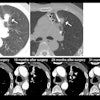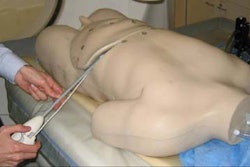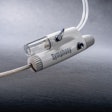Tobias Gilk of Jünk Architects answers questions from AuntMinnie.com on the specifics of introducing interventional MRI into a practice.
How much time should a practice allow for introducing interventional MRI services?
The planning process, which would include designing the room changes, obtaining necessary building permits, coordinating the (magnet) ramp-down with the vendor, and patient scheduling, may take three months.
What about the construction time for modifying an existing MRI suite?
The actual construction work necessary would vary depending upon the original construction of a facility and the degree of modification sought. If the work was carefully coordinated between the general contractor and the shielding vendor (who would need to be brought in to modify the RF shield construction to support any additions of utilities or infrastructure that weren't anticipated in the original shield design), a suite could be modified in as few as 1.5-3 weeks.
Depending upon original building construction, a portion of that construction time would require work in the magnet room and would necessitate a temporary ramp-down of the magnet.
What about the costs?
The specialized construction of MRI facilities, coupled with the financial pressures to maintain maximum patient throughput, make it expensive to build in these simple features once a facility is up and running. The cost of adding the infrastructure to support these services is negligible during initial construction, especially if it's only the rough-in (installing the piping for the sink, without installing the sink, or the wiring and supports for the procedure light without installing the light).
Would it be worthwhile for a radiologist or imaging center administrator to visit other facilities that have successfully started interventional MR programs?
The problem is that many MR departments that were built straight from the magnet vendor's "typical" floor plan aren't equipped to support interventional procedures.
You and I would be highly suspect of a physician who's exam rooms didn't have a hand sink that the doctor used before giving us a routine physical, but there are hospitals all over the country that are performing needle biopsies in their MR room without that same elemental hand sink. It wasn't on the vendor's "typical" floor plan, and thus never made it into the actual building.
My point is that that simply observing a facility that is performing interventional procedures is no guarantee that the facility was actually designed to support the procedure.
Fair enough. If a site visit is planned, what kinds of questions should a person ask at a facility?
I would ask techs and administrators of a facility specifically designed to support interventional procedures the following questions:
- What additional staff is present in the magnet room and suite for interventional procedures?
- What medicines, equipment, and consumables do you now stock (or stock in greater quantities) in the MRI suite to support interventional procedures?
- What are the patient prep/recovery requirements for the procedures performed, and where are these functions provided?
- How do you provide and support patient sedation and/or general anesthetic?
- How are interventional procedures different, in terms of scheduling and throughput?
Do you think adopting interventional MRI into an imaging practice could help radiologists gain ground in the turf battles with other specialists?
I think that the line between diagnostic and interventional has only just begun to dissolve. At the moment, interventional MRI does not represent a large volume of business. This is partly due to reimbursement, partly due to the relative newness of many interventional procedures, and partly because the bulk of MRI facilities in America today are poorly suited to provide interventional care for the reasons I identified above.
But with radiation therapy simulation, hyperthermia treatments, RF ablation, and MR-guided biopsies all on the near horizon, I think that there is tremendous potential for growth in interventional MR.
Will we see oncologists buying MRI units for cancer spectrographic diagnosis, radiation therapy simulation, and hyperthermia plus chemotherapy, just as today cardiologists are buying their own CT systems for coronary imaging and calcium scoring? That I don't know. I suspect that there will be similar pressures to blur the lines between the medical specialties, just as we're removing the distinction between devices used for diagnosis and devices used for treatment.
By Shalmali Pal
AuntMinnie.com staff writer
July 8, 2005
If you would like more information on any aspect of MR facility design or safety, please contact Tobias Gilk at Jünk Architects.
Related Reading
Interventional MRI: Out of the scanning suite and into the OR, July 8, 2005
Part II: Answers to the 10 questions to ask your architect about MRI suite design, April 7, 2005
Part I: 10 questions to ask your architect about MRI suite design, April 5, 2005
The 3-tesla MRI swap: Why it's not a simple upgrade, January 27, 2005
Chilled loop failure: How to break your magnet without even trying, December 8, 2004
Copyright © 2005 AuntMinnie.com



















